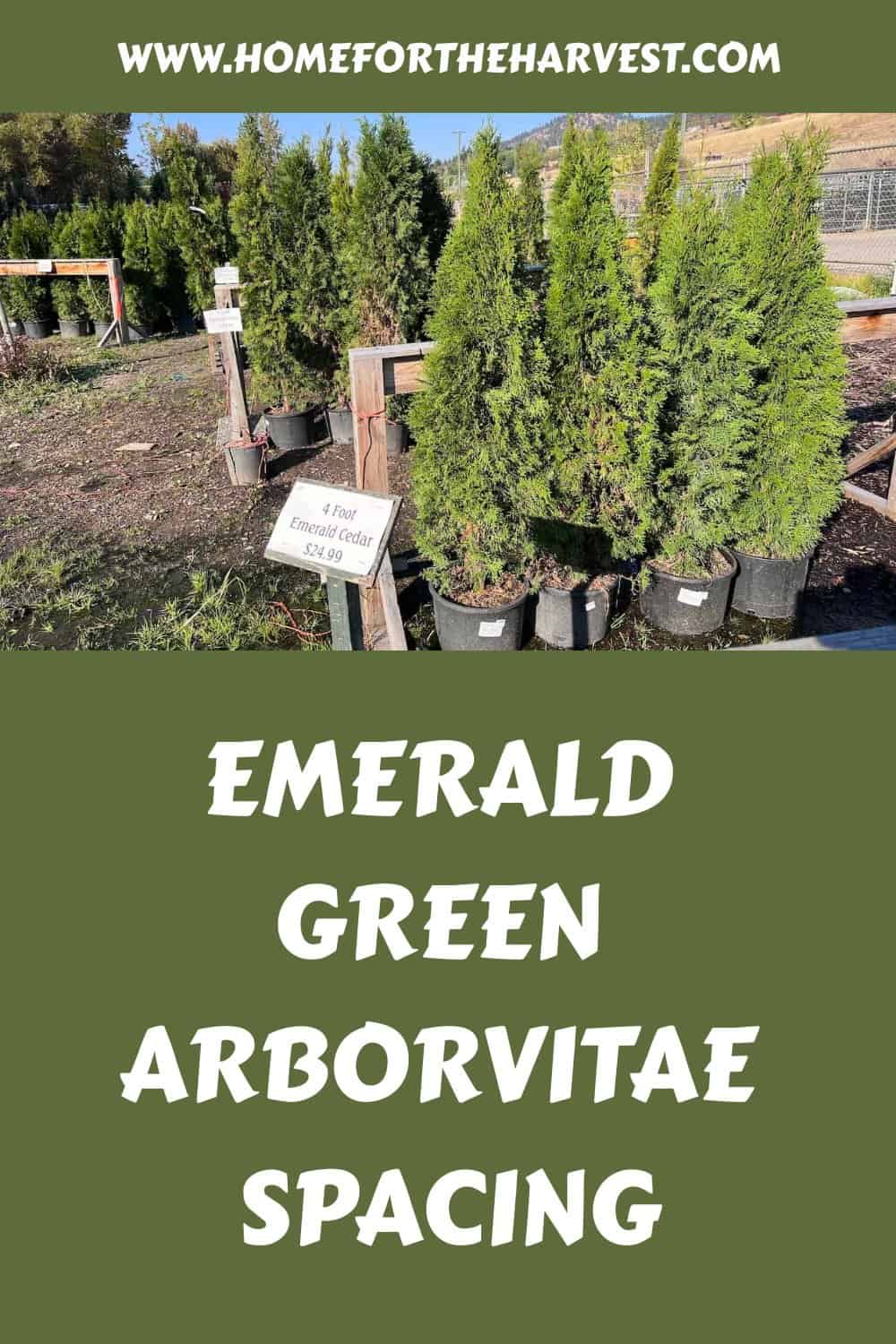Wondering how far apart to plant Emerald Green Arborvitae? You’ll want to consider how you’re using these popular privacy trees to determine the best spacing for your landscape.
Emerald Green arborvitae are usually planted about 30 inches apart for a quick-growing hedge or up to 3-4 feet apart for wider screens and windbreaks. Grouped plantings of individual specimens can be planted 5-6 feet apart to give each plant room to grow outwards in all directions so they form small trees in the landscape. Individual Emerald Green arborvitae plants generally reach about 15 feet tall but are only 3-4 feet wide at their base.
Proper spacing depends not only upon the species and cultivar but also upon the application and local conditions. Read on to learn all about how far apart to plant Emerald Green arborvitae.
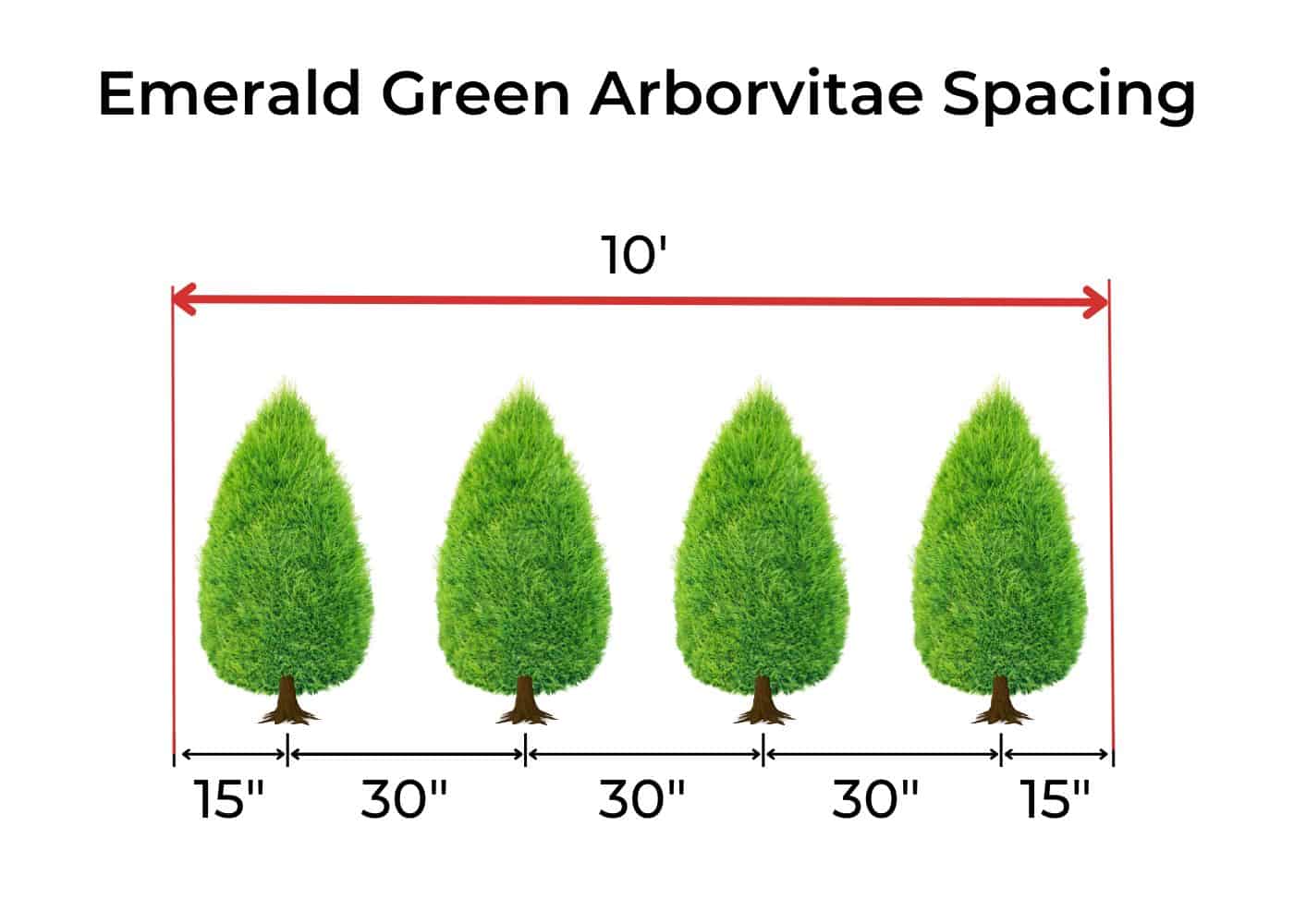
Introduction to Emerald Green Arborvitae spacing
Emerald Green Arborvitae (Thuja occidentalis ‘Smaragd’) is a tall and narrow evergreen cultivar of the American Arborvitae tree. The pyramidal form of this plant makes them well-suited to hedges, natural screens, windbreaks, and even narrow topiaries. And because these plants are relatively tolerant to temperature extremes, they are popular across many growing climates. Emerald Green Arborvitae is also known for being low-maintenance and relatively disease resistant.
When it comes to Emerald Green Arborvitae spacing, the general rule is to plant them 30″ apart (center to center) for a hedge, and more like 3 feet apart for a wider screen. This will ensure that the plants have enough room to grow and fill in without crowding each other out.
Remember that you will likely need to trim and shape a closely-spaced hedge more regularly once it is fully grown. The plants may also be more prone to disease when closely spaced due to reduced air circulation.
Emerald Green Arborvitae will eventually reach a height of 15 feet with a 3-4 foot spread. So, when planting them as individual specimens (to resemble small columnar evergreen trees), be sure to leave 5-6 feet of space between each plant. This will allow the Emerald Green to fill outwards in all directions without crowding other plants or structures. If you need a larger shrub, consider ‘Green Giant,’ which reaches over 30 feet tall and 8-10 feet wide.
Emerald Green Arborvitae spacing is important not just for the health of the plants but also for the overall aesthetics of your landscape. Following these simple guidelines ensures that your Emerald Green arborvitae will thrive for years to come.
“The most commonly found arborvitae (Thuja occidentalis) in the Northwest is ‘Emerald Green,’ also known as ‘Smaragd, which gets about 15 feet tall by 4 feet wide. When shopping, look for healthy plants that are relatively the same size. You’ll find them in containers or balled and burlapped.”
Arborvitae stands tall as easy-care hedge, by Kym Pokorny, Oregon State University
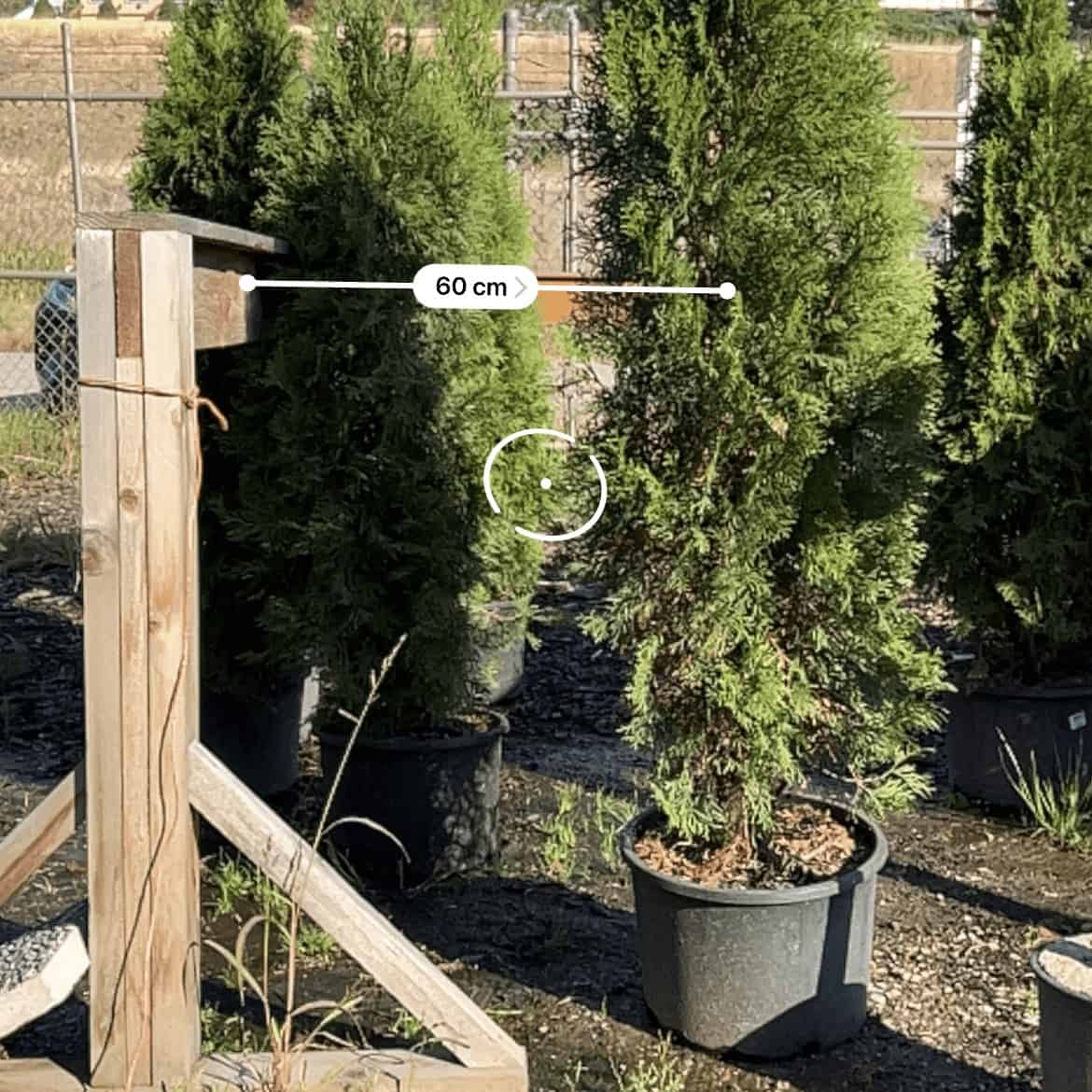
Planting Emerald Green Arborvitae beside a fence
Emerald Green Arborvitae are often planted adjacent to fences. Whether they are being used to cover an ugly fence line, raise the privacy screen height of a short fence, or simply bring some shade and ambiance to an area, these plants are commonly installed beside fences.
Since these shrubs routinely reach 4 feet wide overall, leave at least 2-4 feet between the center of the trunk and the adjacent fence. Emerald Green Arborvitae trees have a pyramidal shape and tend to be wider on the bottom half than the top half at maturity.
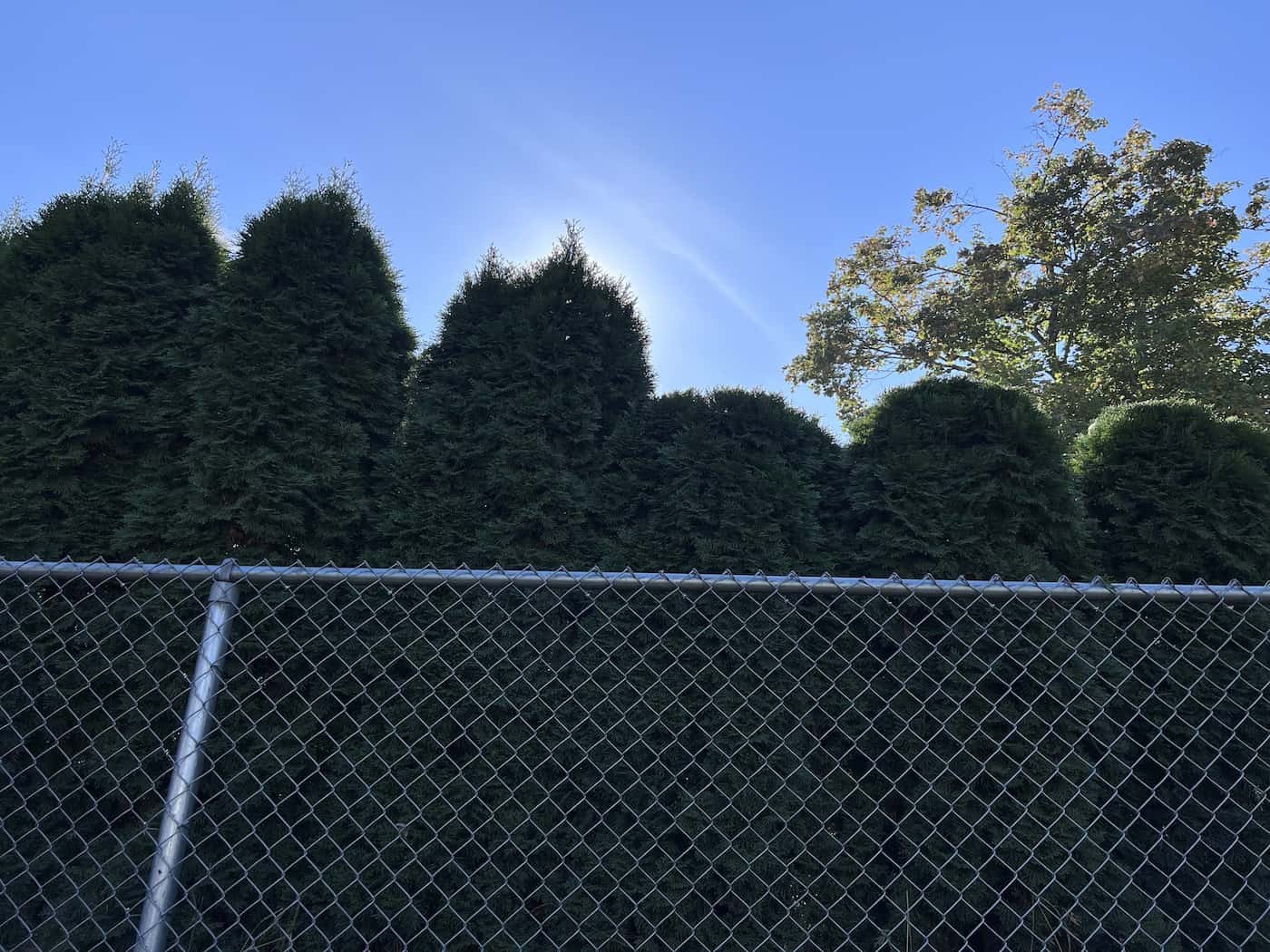
Planting the center of the trunks at 2 feet from the fence will likely lead to shrubs that just touch the fence at maturity. This close planting to the fence will minimize the footprint of the perimeter planting but will also lead to decreased air circulation (which can make the hedge more prone to disease in some climates.
Planting more like 4 feet away from the fence will leave room to walk the fence line behind the plants. That said, the shrubs will seem awkwardly far from the fence on a small property for about five years (or more), until they reach mature height and width.
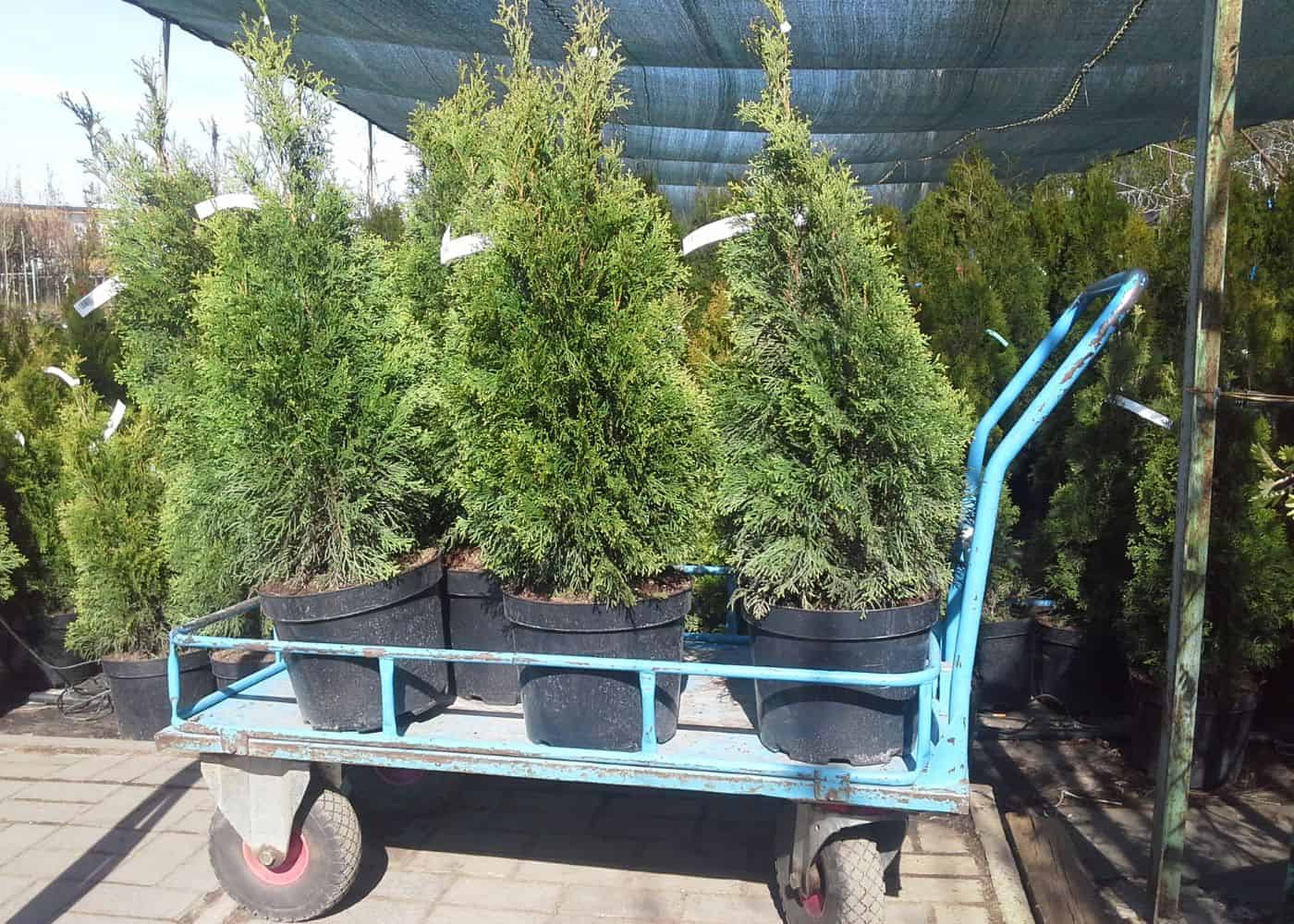
Planting Emerald Green Arborvitae beside a building
Emerald Green Arborvitae are often used as foundation plantings beside buildings and other structures. The shrubs are generally planted at least 4 feet away from building foundations.
While this plant is not generally considered invasive, the root ball does generally grow to be slightly wider than the aboveground foliage. The planting spot should be far enough away from the foundation so that the roots are not in contact with the foundation itself. Ensure your planting plan has enough space for the Thuja tree to grow and thrive without negatively interacting with the adjacent building.
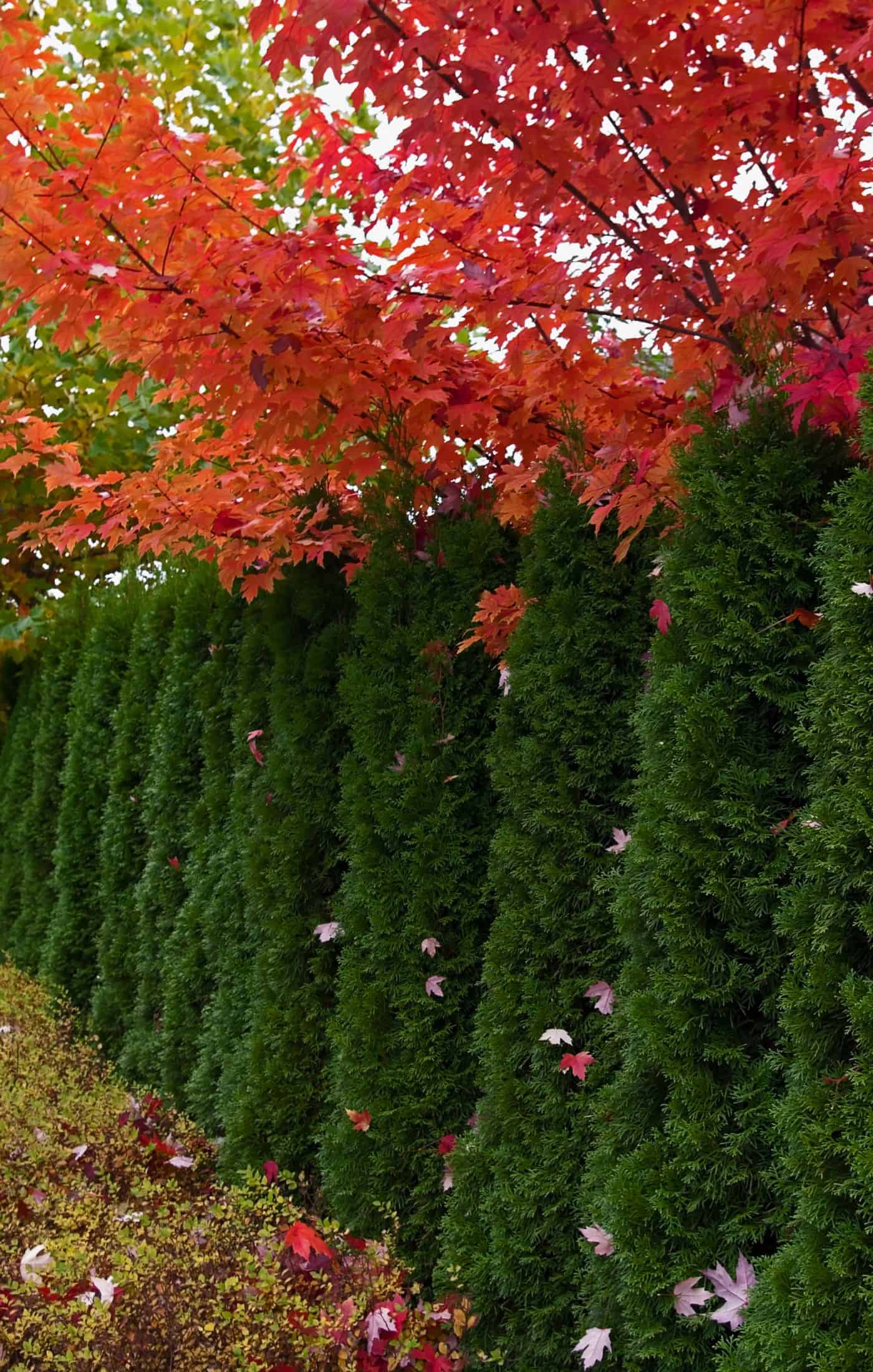
Calculating how many Arborvitae trees to plant
Since Arborvitae are often used as hedging or windbreak plants, it is important to figure out how many individual plants you’ll need to create your living installation.
First, measure the distance of the land to be planted. Take note of the conditions not only along the length of the planting area but especially near where the first and last tree will be planted. If either end is near a structure like a fence or a building, note that down on your draft planting plan so you can make arrangements for the desired offset.
Once you’ve planned the offset distance for the end trees, you can divide the total distance by your desired spacing. To decide how many trees, gardeners usually round up to the nearest whole number (and some landscape designers strongly prefer to round up to odd numbers on small sites). Draw out the trees on grass paper if it’s difficult to picture them in your mind.
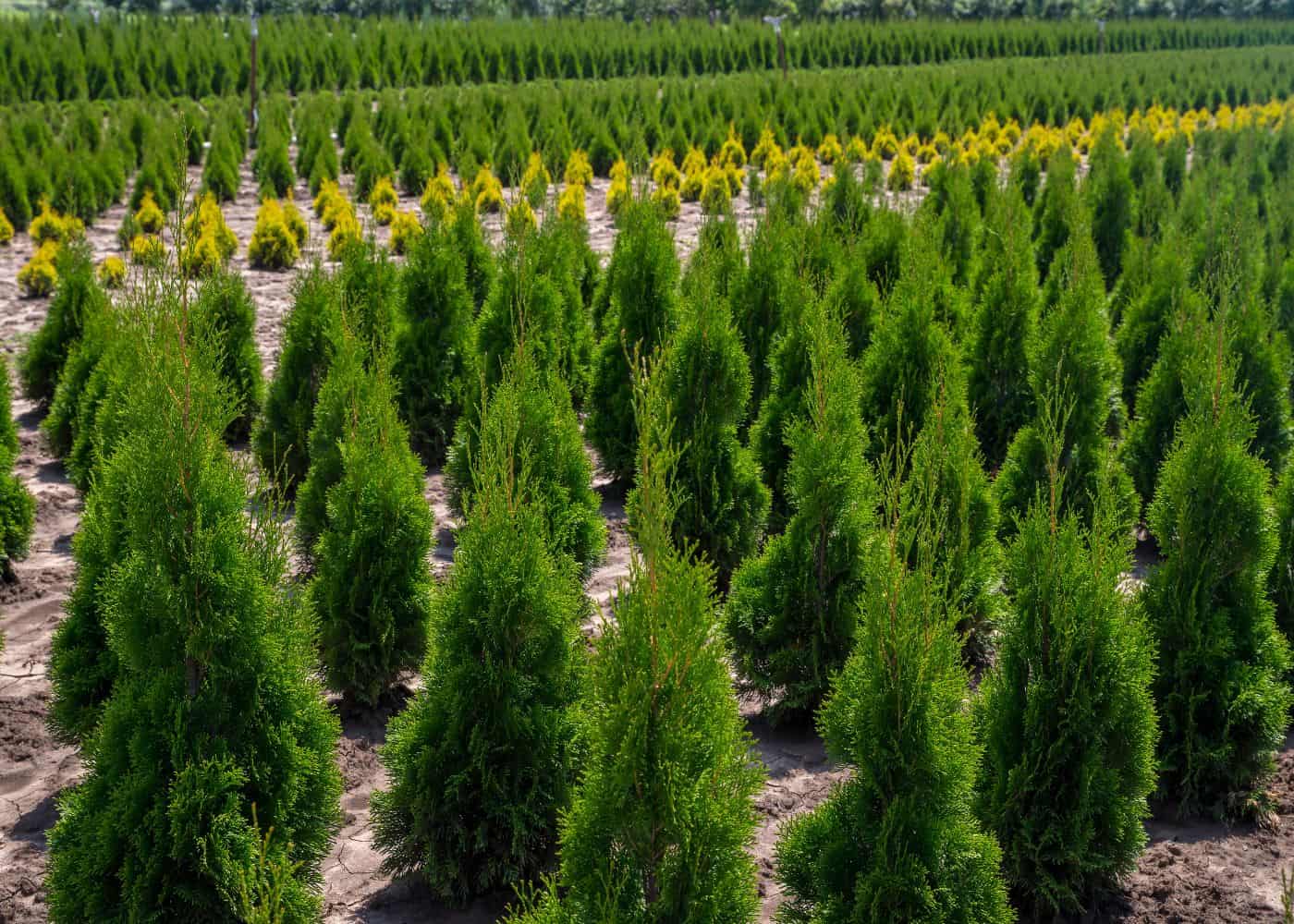
Planting distance effect on pruning
Pruning Emerald Green Arborvitae is not strictly necessary but may be preferred in some applications. These evergreen trees typically maintain a columnar form through maturity, making them very low maintenance.
Stand-alone trees are rarely pruned, except for removing diseased and damaged or dead branches. This is especially true if the tree has great air circulation.
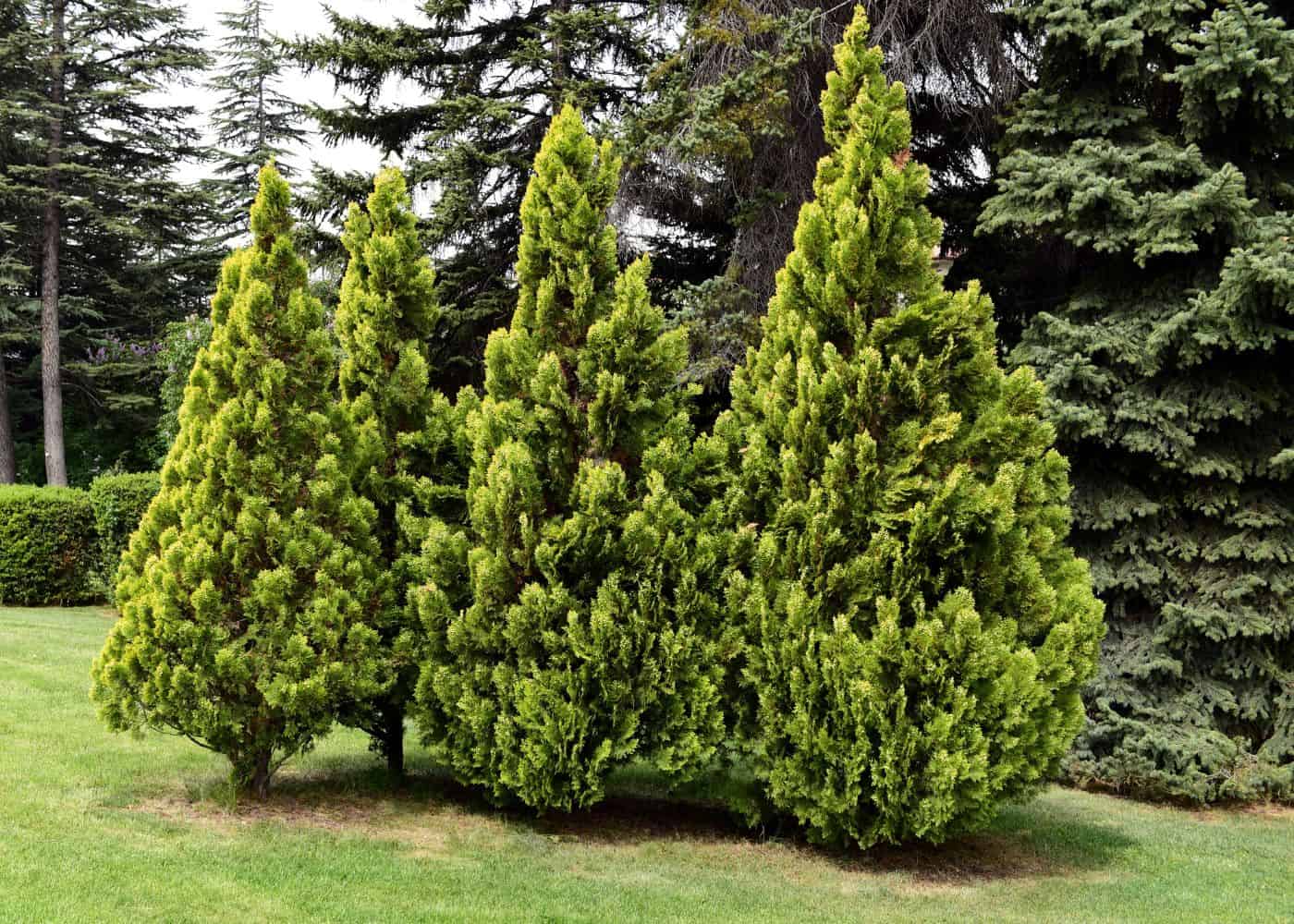
When planting these trees as privacy screens (most often in a straight line), you can decide whether you’d like to have a tightly sheared hedge or a loose, informal hedgerow.
The landscape design for your space will usually dictate the type of pruning maintenance required once the trees have grown to size. Newly planted trees do not typically require pruning in the first few years after tree planting and should be allowed to develop independently.
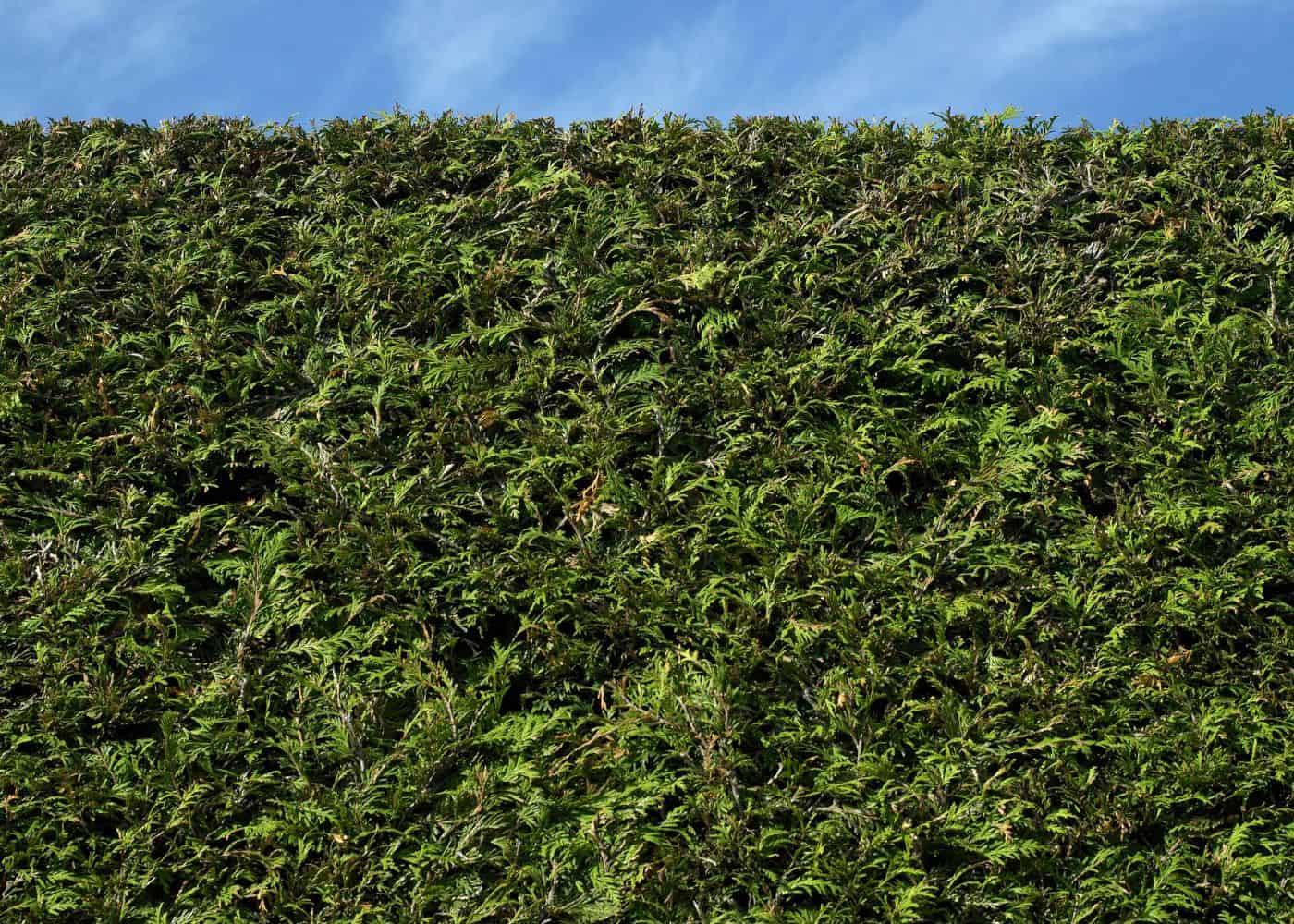
Formal gardens are more likely to have tightly spaced Arborvitae at 2 or 2.5 feet apart, which are trimmed up to 5 times per year once they reach maturity to keep the hedge straight and formal. Informal lines planted at 3 feet apart may never need pruning for shape.
Emerald Green Arborvitae is sometimes pruned into a topiary shape, such as the ever-popular spiral topiaries. Like a formal hedge, these will require frequent pruning (up to 5 times per year).
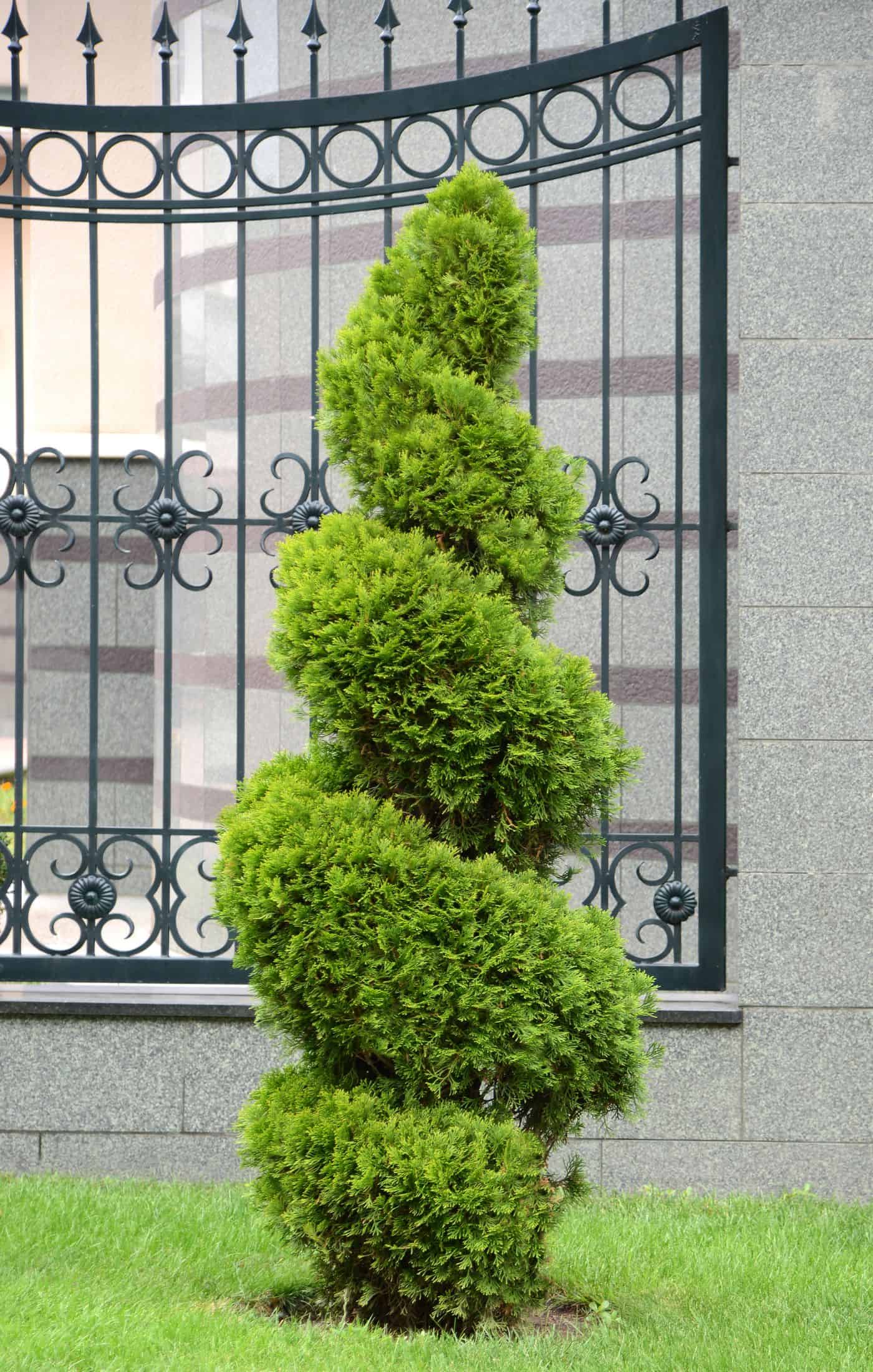
Care tips for vigorous growth
Emerald Green Thuja is a top pick for a privacy hedge due to its moderate growth rate. It is one of the fastest-growing trees that remain green year-round, making them a good pick for privacy trees or to line a driveway or fenceline. The mature width of only 3-4 feet (for a height of 15 feet) also makes them great for narrow spaces.
Arborvitae trees, including Emerald Green, tend to grow very dense foliage. Healthy growth is most likely when they are planted in direct sunlight (for a minimum of 6 hours per day) and in evenly moist soil. Plants growing in partial shade often don’t grow as quickly or vigorously, and plants in too much shade may not reach their full mature size.
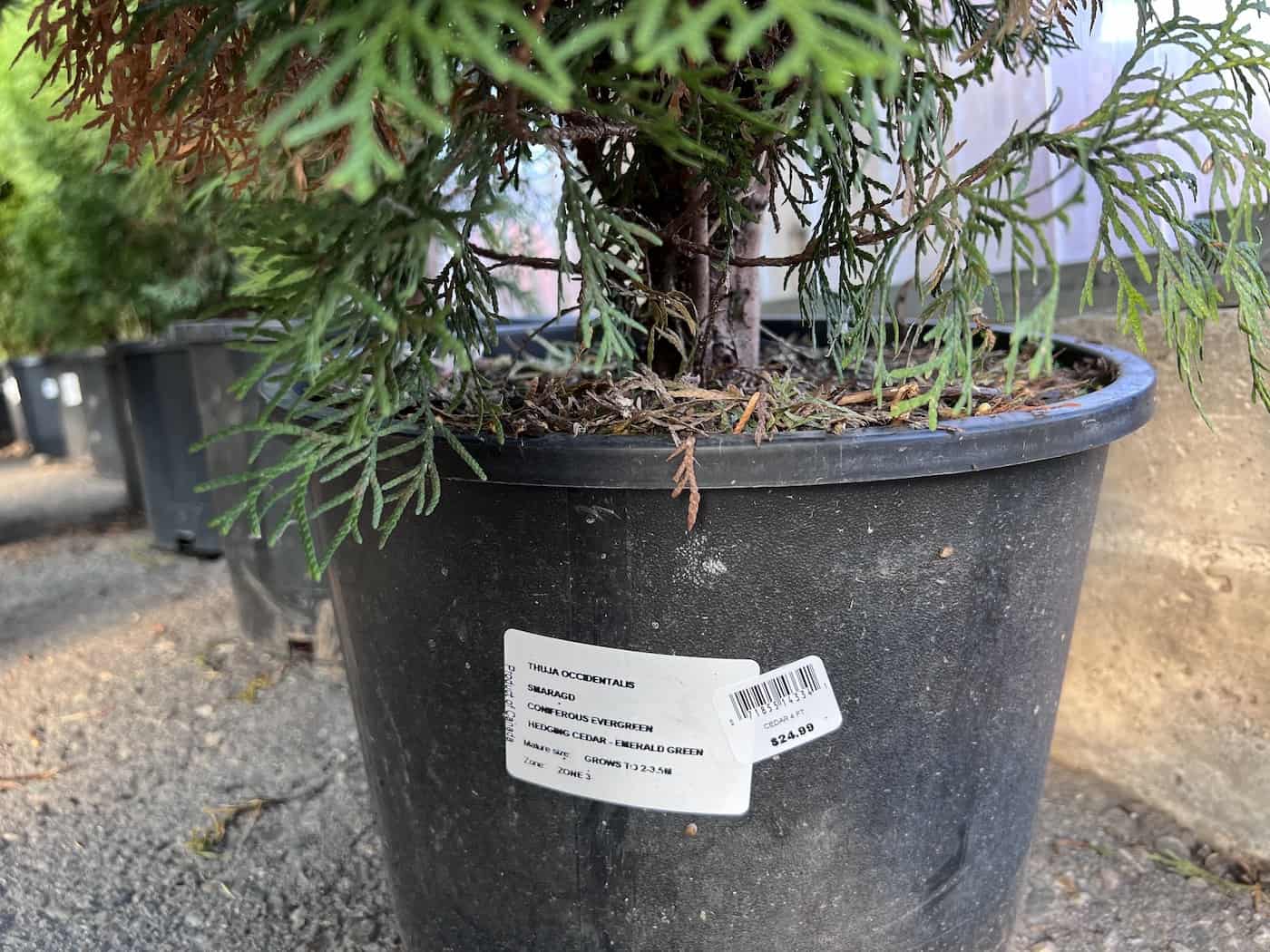
Soil moisture is also important. Keep soil moist consistently for the first two growing seasons after planting. Keeping the roots moist below the ground surface is particularly important during the first six weeks after planting to encourage root growth beyond the root ball.
That said, the soil should not be saturated and should not have ponded water at the surface. Lack of oxygen in the root zone can lead to root rot, whether the plant is located in fertile soil or not. The roots need oxygen just as much as they need nutrients and water.
Soil types that have a significant portion of clay (40% or more) are typically more prone to root rot. Many gardeners like to get a soil test before they plant Arborvitae or other long-lived landscape plants.
Emerald Green Arborvitae can be grown in USDA Plant Hardiness Zones 4-8. This range encompasses most of the USA. Trees in the coldest hardiness zone (Zone 4) may grow more slowly and, therefore, may be planted more closely than those in warmer, sunnier climates.
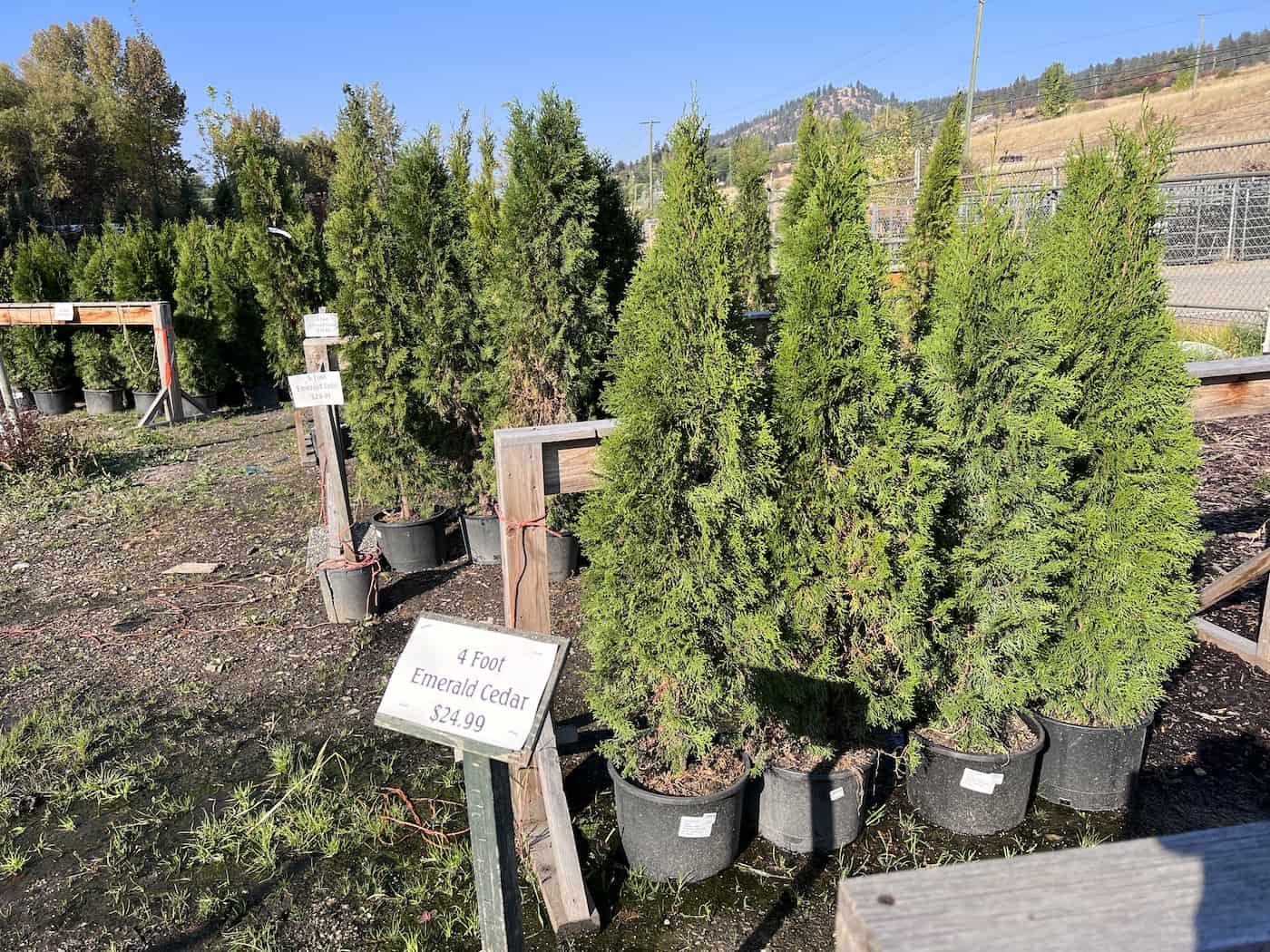
FAQs about spacing Emerald Green cedars for a hedge
How fast does Emerald Green Arborvitae grow?
Emerald Green Arborvitae have an intermediate growth rate, typically growing by 6″-12″ per year. Plants will grow more quickly with full sunlight, adequate moisture, and mineral nutrition in the soil (or by adding a balanced fertilizer).
When is the best time to plant Emerald Green Arborvitaes?
The best time of year to plant Arborvitae/Thuja is in early spring or early fall. Trees are plentiful in early spring, and while the soil is cold, the trees have a full growing season. It is key to keep the roots moist throughout the year. Trees planted in early fall benefit from warm soil and may become established more quickly.
Resources
References
- Thuja occidentalis, Plants of the World Online, Royal Botanic Gardens, Kew
- Emerald Green Arborvitae from Monrovia


